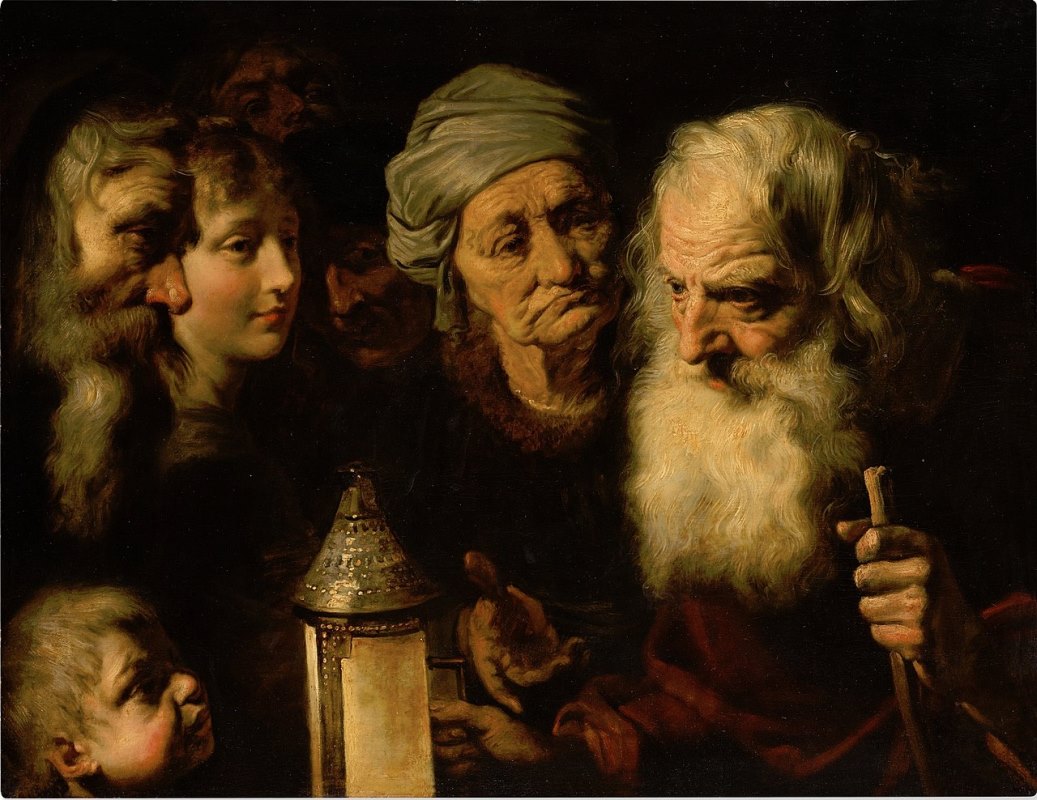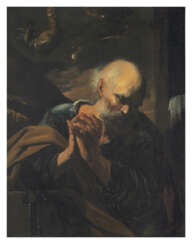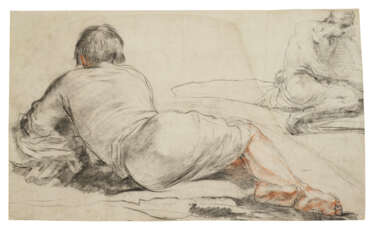mole

Pier Francesco Mola, called Il Ticinese, was an Italian painter of the High Baroque, mainly active around Rome.


Claes Molenar was a Dutch Golden Age landscape painter and draughtsman.


Jan Miense Molenaer was a Dutch painter of the Golden Age of Dutch painting, known for his genre scenes, in particular his depiction of everyday life in the Netherlands in the 17th century.
Jan Minse Molenaer was known for his humorous and lively scenes, often depicting peasants, drunks and musicians. He used a naturalistic style in his works, which were characterized by bright colours and a skilful use of light and shadow. During his career he also painted portraits and religious scenes.
Molenar was a member of the Haarlem Guild of St. Luke and his works were in great demand during his lifetime.


Jan Miense Molenaer was a Dutch painter of the Golden Age of Dutch painting, known for his genre scenes, in particular his depiction of everyday life in the Netherlands in the 17th century.
Jan Minse Molenaer was known for his humorous and lively scenes, often depicting peasants, drunks and musicians. He used a naturalistic style in his works, which were characterized by bright colours and a skilful use of light and shadow. During his career he also painted portraits and religious scenes.
Molenar was a member of the Haarlem Guild of St. Luke and his works were in great demand during his lifetime.


Claes Molenar was a Dutch Golden Age landscape painter and draughtsman.


Claes Molenar was a Dutch Golden Age landscape painter and draughtsman.


Jan Miense Molenaer was a Dutch painter of the Golden Age of Dutch painting, known for his genre scenes, in particular his depiction of everyday life in the Netherlands in the 17th century.
Jan Minse Molenaer was known for his humorous and lively scenes, often depicting peasants, drunks and musicians. He used a naturalistic style in his works, which were characterized by bright colours and a skilful use of light and shadow. During his career he also painted portraits and religious scenes.
Molenar was a member of the Haarlem Guild of St. Luke and his works were in great demand during his lifetime.


Jan Miense Molenaer was a Dutch painter of the Golden Age of Dutch painting, known for his genre scenes, in particular his depiction of everyday life in the Netherlands in the 17th century.
Jan Minse Molenaer was known for his humorous and lively scenes, often depicting peasants, drunks and musicians. He used a naturalistic style in his works, which were characterized by bright colours and a skilful use of light and shadow. During his career he also painted portraits and religious scenes.
Molenar was a member of the Haarlem Guild of St. Luke and his works were in great demand during his lifetime.


Jan Miense Molenaer was a Dutch painter of the Golden Age of Dutch painting, known for his genre scenes, in particular his depiction of everyday life in the Netherlands in the 17th century.
Jan Minse Molenaer was known for his humorous and lively scenes, often depicting peasants, drunks and musicians. He used a naturalistic style in his works, which were characterized by bright colours and a skilful use of light and shadow. During his career he also painted portraits and religious scenes.
Molenar was a member of the Haarlem Guild of St. Luke and his works were in great demand during his lifetime.


Pier Francesco Mola, called Il Ticinese, was an Italian painter of the High Baroque, mainly active around Rome.


Pier Francesco Mola, called Il Ticinese, was an Italian painter of the High Baroque, mainly active around Rome.


Pier Francesco Mola, called Il Ticinese, was an Italian painter of the High Baroque, mainly active around Rome.


Carl Timoleon von Neff (Russian: Тимофей Андреевич Нефф) was a Baltic German painter, known for his mastery in religious, portrait, and allegorical themes. Born in 1804 in Püssi, Estonia, Neff's talent led him to study under renowned artists in Italy and Germany, honing a style that blended academic and neoclassical influences.
Neff's works are particularly revered for their delicate handling of religious subjects and the regal elegance of his portraits. He became a favored artist at the Russian court, contributing significantly to the art collection of the Imperial family. Among his notable works, the altarpieces in the palace church at Peterhof and the St. Michael's Castle in Saint Petersburg stand out, showcasing his skill in creating spiritually profound and aesthetically pleasing compositions.
For art collectors and experts, Neff's paintings not only represent a fusion of religious devotion and artistic finesse but are also a testament to the rich cultural interplay in 19th-century Russian art. Those interested in exploring or acquiring pieces by Carl Timoleon von Neff should consider signing up for updates on new sales and auction events specifically related to his works. This ensures you remain informed about the availability of his influential and sought-after pieces.


Pier Francesco Mola, called Il Ticinese, was an Italian painter of the High Baroque, mainly active around Rome.


Pier Francesco Mola, called Il Ticinese, was an Italian painter of the High Baroque, mainly active around Rome.


Carl Timoleon von Neff (Russian: Тимофей Андреевич Нефф) was a Baltic German painter, known for his mastery in religious, portrait, and allegorical themes. Born in 1804 in Püssi, Estonia, Neff's talent led him to study under renowned artists in Italy and Germany, honing a style that blended academic and neoclassical influences.
Neff's works are particularly revered for their delicate handling of religious subjects and the regal elegance of his portraits. He became a favored artist at the Russian court, contributing significantly to the art collection of the Imperial family. Among his notable works, the altarpieces in the palace church at Peterhof and the St. Michael's Castle in Saint Petersburg stand out, showcasing his skill in creating spiritually profound and aesthetically pleasing compositions.
For art collectors and experts, Neff's paintings not only represent a fusion of religious devotion and artistic finesse but are also a testament to the rich cultural interplay in 19th-century Russian art. Those interested in exploring or acquiring pieces by Carl Timoleon von Neff should consider signing up for updates on new sales and auction events specifically related to his works. This ensures you remain informed about the availability of his influential and sought-after pieces.


Pier Francesco Mola, called Il Ticinese, was an Italian painter of the High Baroque, mainly active around Rome.


Pieter van Mol was a Flemish painter and draftsman who worked in the Baroque style.
Pieter van Mol became a master and member of the Antwerp Guild of Artists of St. Luke's in 1622. Around 1631 he moved to Paris, where he opened his own studio and worked at the court of Louis XIII as a court painter. Later, among other artists under the patronage of Cardinal Mazarini, he became the organizer and one of the first members of the French Academy of Painting and Sculpture, later - the Royal Academy of Painting.
Pieter van Mol painted historical and religious subjects, portraits and allegories. His style was obviously strongly influenced by the work of Rubens.


Pier Francesco Mola, called Il Ticinese, was an Italian painter of the High Baroque, mainly active around Rome.


Pieter van Mol was a Flemish painter and draftsman who worked in the Baroque style.
Pieter van Mol became a master and member of the Antwerp Guild of Artists of St. Luke's in 1622. Around 1631 he moved to Paris, where he opened his own studio and worked at the court of Louis XIII as a court painter. Later, among other artists under the patronage of Cardinal Mazarini, he became the organizer and one of the first members of the French Academy of Painting and Sculpture, later - the Royal Academy of Painting.
Pieter van Mol painted historical and religious subjects, portraits and allegories. His style was obviously strongly influenced by the work of Rubens.


Karl Schmidt-Rottluff, a prominent figure in the German Expressionist movement, was not just an artist but a pioneer who significantly influenced the early 20th-century art scene. Born in Rottluff, Germany, in 1884, he later added his hometown's name to his surname, showcasing a deep connection to his roots. Schmidt-Rottluff was a founding member of the artist group Die Brücke, which played a critical role in the development of Expressionism in Germany. His works, characterized by bold colors and stark contrasts, were a departure from traditional artistic expressions and embraced a more emotional and subjective interpretation of reality.
Schmidt-Rottluff's contributions to art were not limited to painting; he was also a master printmaker, with a significant body of work comprising woodcuts, lithographs, and etchings. His artistic endeavors were marked by a fascination with the natural world, social issues, and an exploration of human emotion, themes that remained consistent throughout his career. Despite facing persecution during the Nazi regime, with many of his works labeled as "degenerate," Schmidt-Rottluff's resolve did not waver. In 1937, 608 of his paintings were seized, and by 1941, he was forbidden to paint. Yet, his legacy continued to grow post-World War II, and he was later honored with professorship at the University of Arts in Berlin-Charlottenburg in 1947, where he influenced a new generation of artists.
The value and impact of Schmidt-Rottluff's work are reflected in the presence of his pieces in prestigious collections worldwide, including the Museum of Modern Art, Neue Galerie, Los Angeles County Museum of Art, and many others. His works are celebrated for their emotional depth, innovative use of color, and ability to convey complex themes through simplified forms. Notably, some of his significant pieces have been subjects of restitution efforts, highlighting the historical importance and continued relevance of his work in the context of art history and cultural heritage.
For collectors and experts in art and antiques, Schmidt-Rottluff's oeuvre offers a profound insight into the evolution of Expressionism and the broader cultural and political narratives of the early 20th century. His works not only serve as a testament to his individual genius but also as a reflection of the tumultuous era that shaped them.
To stay informed about new discoveries, sales, and auction events related to Karl Schmidt-Rottluff's work, signing up for updates is highly recommended. This ensures that enthusiasts and collectors alike are always in the loop regarding opportunities to engage with and acquire pieces by this influential artist, ensuring his legacy continues to inspire and resonate with future generations.







































































